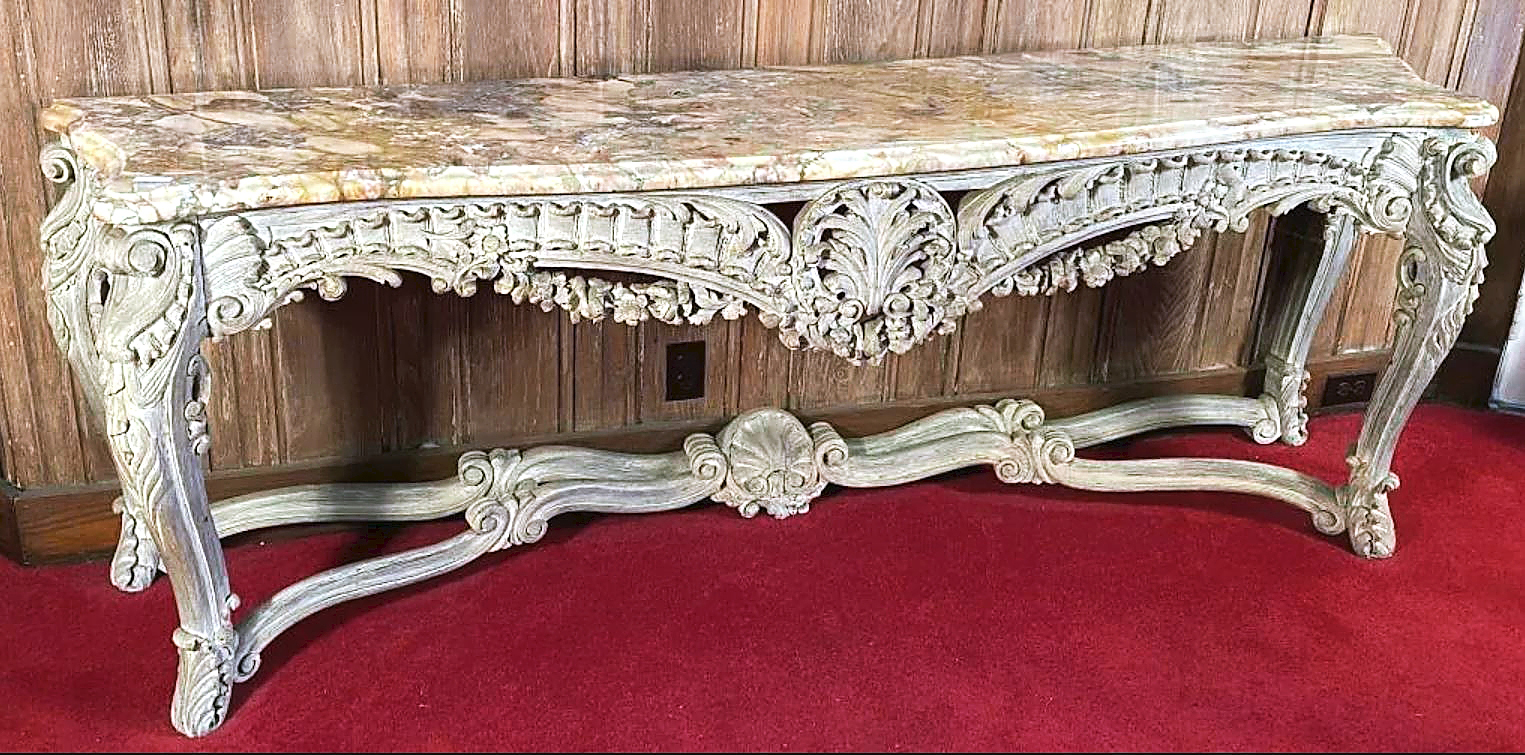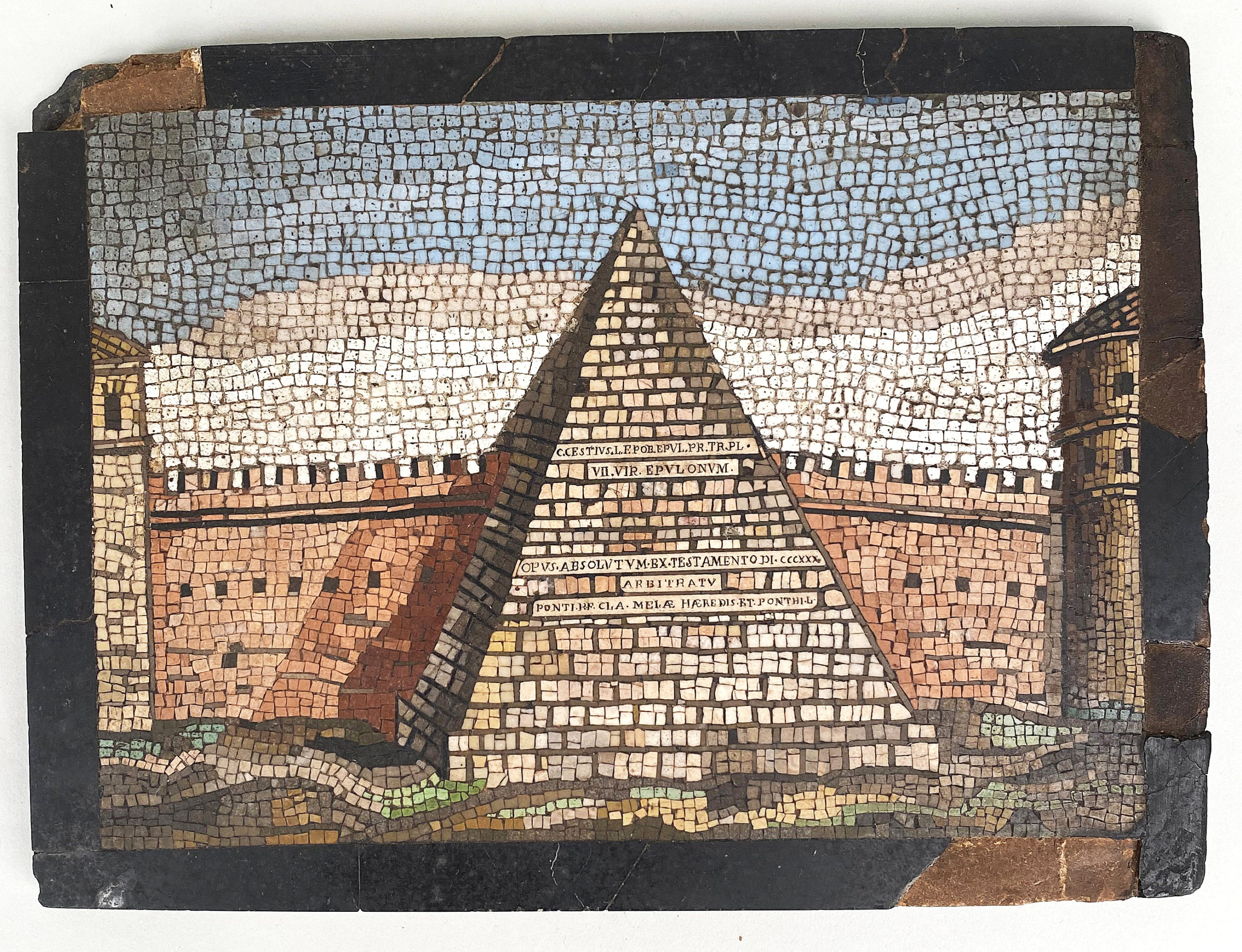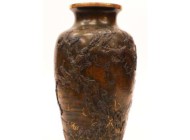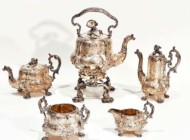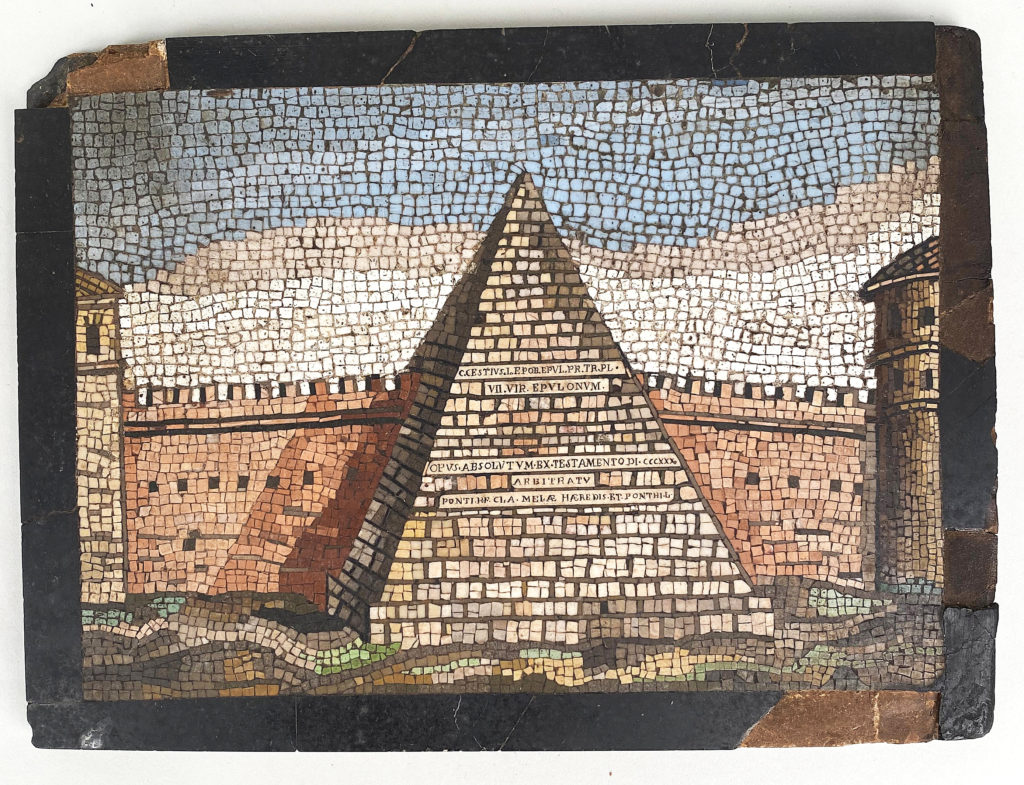
A Grand Tour souvenir in the form of an early micromosaic plaque depicting a Roman-era pyramid built as a tomb was the sale’s top lot, selling to an internet bidder at $5,600, more than six times its $900 high estimate.
Review by W.A. Demers, Photos Courtesy Schwenke Auctioneers
WOODBURY, CONN. – Characterized as an important single-owner sale of “Old World” Continental/European fine and decorative arts, Schwenke Auctioneers’ January 31 sale offered the collection, comprising more than 300 lots, that was primarily assembled in the early Twentieth Century.
Leading it all was a Grand Tour souvenir in the form of an early micromosaic plaque depicting the Pyramid of Cestius, a Roman-era pyramid built as a tomb for the magistrate/priest Caius Cestius and his family. Bearing old partial labels verso and measuring 8 inches high by 11 inches wide, the plaque sold to an internet bidder at $5,600, more than six times its $900 high estimate.
The overall sale included fine art, Tiffany and other Art Nouveau lamps, Tiffany art glass and bronzes and more – all either inherited from family or collected over the course of 50 years of international travel.
The jolly old elf we all await on Christmas Eve is far from the depiction in a Russian icon, “Saint Nicholas The Wonder Worker,” which sold for $3,225. Instead, the likeness is the wizened, wispy-bearded Saint Nicholas of Myra, also known as Nicholas of Bari, the early Christian bishop of Greek descent during the time of the Roman Empire. It was because of the many miracles attributed to his intercession, that he was known as Nicholas the Wonder Worker. Here in this pigment and gilt on panel, he is flanked by Christ and the Mother of God. With an old label in Russian and English verso, the panel measured 13¾ high and 12¼ inches wide.

A Tiffany & Co gilt-bronze lidded box with its domed lid containing an inset plaque with a miniature painting of the Taj Mahal brought $1,808. The gilt-bronze box stood on paw feet, was gadrooned with ornate detailing and had a lined interior with key. From the late Nineteenth/early Twentieth Century, it was signed “Tiffany & Co. 0198 Makers” and measured 5½ by 8½ by 6-7/8 inches.
The antique lighting category shone with some choice examples fetching top prices. Leading them was a Handel lamp, with floral stained glass shade, which sold for $2,967. With leaded glass blossom shade on a tapering foliate cast metal base, the lamp stood 25½ inches high. Both shade and base were signed.
Another Handel lamp was an Art Nouveau example with a floral leaded shade decorated with multicolored blossoms. Fetching $1,962, it featured a flaring footed bronze base with banded detail and was 25¼ inches high.
The majority of the value of a Handel lamp is derived from the shade because of the artistic work that went into each one. In most situations, the base is rather unimportant. So, while the shade of another Handel stained glass lamp was signed, a signature was not found on the bronze Native American base, a so-called “Scout” base. The 24¼-inch-high lamp brought $2,064.
Tiffany was also represented. A signed Tiffany Studios table lamp realized $1,939. With leaded glass shade and adjustable gilt-bronze base, signed “Tiffany Studios New York 333,” it was 22½ inches high with a 16¼-inch diameter.

This carved walnut Black Forest cuckoo clock, which struck $1,806, had a removable stag crest and was driven by typical pine cone-form weights. At 44 inches high and 25 inches wide, its running condition was undetermined.
Highlighting the furniture category, a Continental carved and painted marble top console table took $2,709. It had a serpentine form with deeply carved foliate and swag detail and stood on curved cabriole legs with “X” stretcher. Its top was of molded edge brecchia marble and dimensions were 31½ by 89½ by 18 inches.
No Grand Tour-themed sale would be complete without some carved Black Forest fare, and this one included a carved walnut Black Forest cuckoo clock, which struck $1,806. With a removable stag crest, it featured the usual naturalistic open carved frame and was driven by typical pine cone-form weights. At 44 inches high and 25 inches wide, its running condition was undetermined.
Described as in “running condition on premises” was a Tiffany & Co mahogany cased tall clock, circa 1900, with scrolled broken arch pediment, brass dial marked “England,” the case with engaged columns and a molded bracket/plinth base. Its movement was quarter strike, nine tube, and its brass face had an applied cherub and scroll accents marked “Tiffany & Co” and “Made in England.” The face measured approximately 14½ inches high, 10½ inches wide, and the clock overall stood 86 inches high. It gaveled at $1,808.

After the high Italian Renaissance artist Raphael’s depiction of “Madonna della Sedia” with Virgin, Christ child and St John, this likely Nineteenth Century copy of the early Sixteenth Century original was housed in an elaborate carved giltwood frame with figural busts and left the gallery at $1,677.
Two additional notable lots bear mentioning. A Tiffany & Co gilt-bronze Taj Mahal lidded box also brought $1,808. Evoking the well-touristed Islamic ivory-white marble mausoleum in the Indian city of Agra commissioned in the Seventeenth Century, the box’s domed lid contained an inset plaque with a miniature painting of the Taj Mahal within a scalloped reserve. The gilt-bronze box stood on paw feet, was gadrooned with ornate detailing and had a lined interior with key. From the late Nineteenth/early Twentieth Century, it was signed “Tiffany & Co 0198 Makers” and measured 5½ by 8½ by 6-7/8 inches.
And a fine art highlight was an oil on canvas painting after the high Italian Renaissance artist Raphael depicting “Madonna della Sedia” (Virgin, Christ child and St John). Probably a Nineteenth Century copy of the early Sixteenth Century original, it was housed in an elaborate carved giltwood frame with figural busts measuring 28 by 25 inches. It left the gallery at $1,677. The original, titled “Madonna della Seggiola,” executed circa 1513-14, is housed at the Palazzo Pitti Collection in Florence, Italy.
Prices given include the buyer’s premium as stated by the auction house. For information, www.woodburyauction.com or 203-266-0323.




